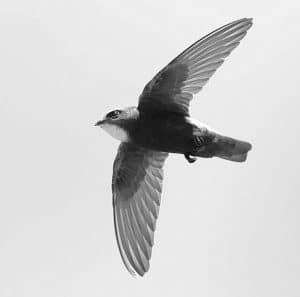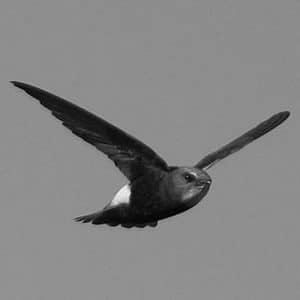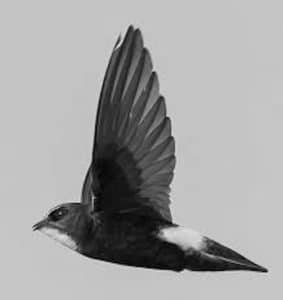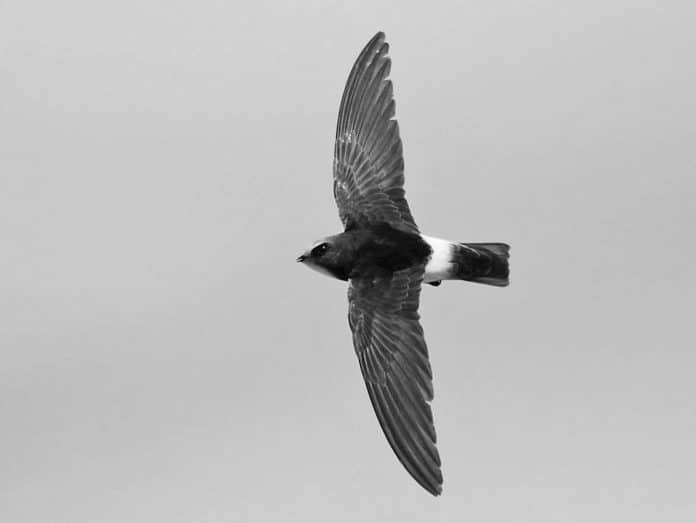Introduction to the Little Swift in Tanzania
Welcome to Tanzania, a country known for its rich wildlife and stunning landscapes. In this birdwatcher’s guide, we will delve into the world of the little swift, a tiny bird with a big presence in Tanzania. The little swift in Tanzania, scientifically known as Apus affinis, is a fascinating species that can be found throughout the country. From its habitat and distribution to its physical characteristics and behavior, join us as we explore the world of these captivating birds.
Overview of the Little Swift’s Habitat and Distribution in Tanzania

The little swift is a highly adaptable bird that can be found in various habitats across Tanzania. They are commonly spotted in both urban and rural areas, making their homes in crevices and cavities on cliffs, buildings, and even trees. These birds are known for their ability to live in close proximity to humans, often nesting under the eaves of houses or on the ledges of tall buildings.
In terms of distribution, the little swift can be found throughout Tanzania, from the lowlands to the highlands. They are particularly abundant in the northern regions of the country, such as the Serengeti, Ngorongoro, and Lake Manyara. These areas provide ideal conditions for the little swift, with ample food sources and suitable nesting sites.
Physical Characteristics and Unique Features of the Little Swift
Despite its small size, the little swift possesses striking physical characteristics and unique features. These birds measure about 12 centimeters in length and have a wingspan of approximately 35 centimeters. They have a streamlined body shape, allowing them to fly swiftly and maneuver effortlessly through the air.
One of the most distinctive features of the little swift is its deeply forked tail, which helps with aerial agility. Their feathers are predominantly dark brown, with a slight metallic sheen. Additionally, they have short legs and small, sharp claws that enable them to cling to vertical surfaces, such as walls or cliffs.
Behavior and Feeding Habits of the Little Swift
Observing the behavior and feeding habits of the little swift can be a fascinating experience for birdwatchers. These birds are highly social and are often seen flying in large flocks, especially during feeding times. They communicate with each other through high-pitched calls and perform aerial acrobatics, soaring and diving in synchronized patterns.
Little swifts primarily feed on insects, which they catch mid-air during their swift flights. They have a remarkable ability to capture prey on the wing, using their wide, gaping mouths to scoop up insects as they fly. This feeding behavior makes them an important part of the ecosystem, as they help control insect populations in their habitats.
Importance of the Little Swift in the Ecosystem

The little swift plays a crucial role in the ecosystem of Tanzania. By preying on insects, they help regulate pest populations, benefiting both humans and other wildlife. Their feeding habits make them natural pest controllers, reducing the need for chemical pesticides in agricultural areas.
Furthermore, the little swift contributes to the pollination of plants as they inadvertently transfer pollen from one flower to another while feeding on nectar. This process aids in the reproduction of various plant species and helps maintain the overall biodiversity of Tanzania’s ecosystems.
Popular Birdwatching Spots for Observing the Little Swift in Tanzania
If you’re a birdwatching enthusiast eager to observe the little swift in its natural habitat, Tanzania offers a plethora of fantastic locations. The Serengeti National Park is renowned for its vast savannahs and diverse birdlife, including the little swift. Here, you can witness the spectacle of these birds swooping and gliding through the open plains.
Lake Manyara National Park is another hotspot for birdwatching, with its abundant bird species and stunning landscapes. Keep an eye out for the little swift as it darts around the cliffs and over the shimmering lake. In addition, the Ngorongoro Conservation Area offers a unique opportunity to observe the little swift against the backdrop of the world-famous Ngorongoro Crater.
Tips for Birdwatching and Identifying the Little Swift
Identifying the little swift can be challenging due to its small size and rapid flight patterns. However, with a keen eye and some helpful tips, you can successfully spot and identify these birds. Firstly, look for their deeply forked tail, which is a distinctive characteristic of the species. Their dark brown feathers and swift, agile flight are also key features to observe.
When birdwatching, pay attention to their calls and behavior. The little swift’s high-pitched calls are often heard when they are flying in flocks or defending their nesting sites. By listening for these vocalizations and observing their flight patterns, you can enhance your chances of spotting them amidst the flurry of activity in the sky.
Conservation Efforts for the Little Swift in Tanzania

Conservation efforts are crucial for protecting the little swift and ensuring its continued presence in Tanzania. As urbanization expands and natural habitats diminish, it is essential to create awareness about the importance of preserving nesting sites and maintaining suitable environments for these birds.
Organizations such as the Tanzania Bird Atlas Project and the Tanzania Wildlife Research Institute are actively involved in monitoring bird populations and promoting conservation initiatives. By supporting these organizations and engaging in sustainable practices, we can contribute to the preservation of the little swift and its habitat for future generations to appreciate.
Other Bird Species Commonly Found Alongside the Little Swift in Tanzania
Tanzania is home to an incredibly diverse avian population, and while the little swift may steal the spotlight, it is not the only bird species worth observing. Alongside the little swift, you may encounter other fascinating species such as the African fish eagle, the lilac-breasted roller, and the African grey hornbill.
These birds showcase the incredible diversity of Tanzania’s avifauna and provide birdwatchers with a wide range of species to admire. Whether you’re exploring the lush forests, vast grasslands, or picturesque lakes, keep your binoculars ready to spot these magnificent birds in their natural habitats.
Conclusion: Appreciating the Beauty and Significance of the Little Swift in Tanzania’s Avian Diversity
In conclusion, the little swift is a tiny bird with a big presence in Tanzania. From its unique physical characteristics to its important role in the ecosystem, these birds captivate birdwatchers and contribute to the overall avian diversity of the country. By visiting popular birdwatching spots and practicing responsible tourism, we can appreciate the beauty of the little swift while ensuring its conservation for generations to come.
So, grab your binoculars, pack your camera, and embark on an unforgettable birdwatching adventure in Tanzania. Witness the swift flight and marvel at the intricate behavior of the little swift, a true gem in Tanzania’s avian kingdom.


































